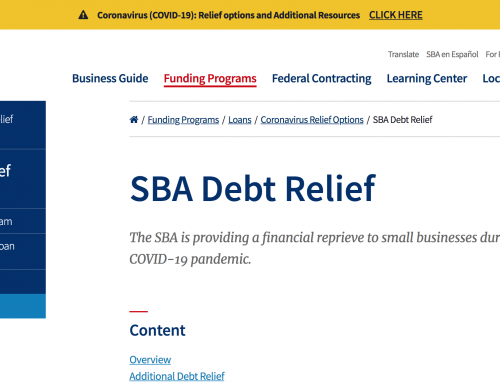Podcast: Play in new window | Download
Subscribe: Apple Podcasts | RSS
In this particular episode, you will learn
- About Partnerships
- Flow-Through Businesses
Podcast transcript:
Disclaimer: This information is for educational purposes only and not to be used as tax or legal advice. Tax law and accounting protocol are constantly changing.
Topics
Flow-through Entities and Corporate Double Taxation
General Partnership
Limited Partnership (LP)
Limited Liability Company (LLC)
Sole Member LLC (SMLLC)
Flow-through Entities and Corporate Double Taxation
Partnerships, limited partnerships (LPs), and limited liability companies (LLCs) are referred to as flow-through entities for tax purposes. LPs and LLCs generally fall under the same tax and accounting rules formally established for regular partnerships. Flow-through entities do not pay federal or state income tax and therefore “flow” income and loss activity to owners. Owners then report income and deductions on a tax return as an individual or other business entity. The owner of a partnership, limited partnership, or limited liability company can be an individual, another partnership structure, corporation, and certain trusts. Some entities, such as trusts, may be a hybrid between flowing out income to beneficiaries and paying tax at the trust level. In addition to tax at the individual partner level, partnership entities may also pay state and local fees. State and local fees for flow-through entities are generally small compared to tax at the individual level. Fees can create some double-taxation; however, double taxation generally refers to the dual taxation of corporate income and corporate dividends.
Regular corporations are taxed on profits at the corporate level and are therefore not flow-through entities. Once a corporation has paid tax on profits, dividends may be paid to shareholders who are owners of the corporation. Dividends are considered income to shareholders and are taxable. Corporate profits are therefore subject to double taxation because there is tax at both the corporate and shareholder level.
General Partnership
The general partnership entity structure is comprised of two or more owners referred to as partners. Ownership of a partnership’s income, loss, and capital is represented as a percentage or units, which calculate to an ownership percentage. No stock is issued. A general partnership is not a separate entity from the owners. Partners are therefore personally liable for all business debts and lawsuits. If two or more individuals start operating as a business they will likely be considered a general partnership. The partnership establishes a business name by filing documents with the local government. Partners may choose to have a partnership agreement to govern operations of the business. As a flow-through entity, profit and loss for tax purposes are reported on the partner’s tax return, whether as an individual or business.
Employees and partners receive compensation differently under the partnership structure. The entity may have employees who are paid wages. Partners generally distribute money to themselves based on profit or loss; however, may also be compensated using guaranteed payments. Guaranteed payments are similar to employee compensation, but without taxes being withheld. Typical general partnerships are small in nature and may be for: property ownership, consulting services, and two or more individuals operating informally.
Advantages
Partnerships can be setup informally without additional legal or state fees. The structure allows for multiple owners and outside investment. The ownership is very flexible and can divide profit, loss, and capital ownership percentages differently. There is no tax on the federal level, but a separate federal tax return is still required. Similar to draws in a sole proprietorship, partners generally take distributions to receive cash payments. Partners may also be compensated unevenly using guaranteed wages, regardless of overall profit or loss. If properly setup, partners may be able to take unreimbursed partnership expenses on their individual return. Because partnerships are flow-through entities and do not pay income tax at the partnership level, double corporate taxation does not occur.
Disadvantages
Partners in partnerships have unlimited personal liability for any actions committed by the owners or employees in the course of work. Thus, if an owner or employee commits harm, intentional or otherwise, every partner may be personally liable for damages. Partnerships can obtain insurance to protect owners to combat this disadvantage. Most businesses with more than one owner will elect a different flow-through entity that offers some limited liability, such as a limited partnership (LP) or a limited liability company (LLC). Due to the flow-through nature of partnerships, taxation and accounting can become particularly complex. Different income and deduction types are segregated for tax purposes.
Accounting
Accounting for partnerships under GAAP requires double-entry, accrual based accounting for financial statements. The ownership is represented as capital, an equity account. Withdrawals of capital are considered distributions similar to that of sole proprietors. Because certain income and expenses are required to be stated on the owner’s tax return, there may be a need to maintain accounts differently for GAAP and tax purposes. Partnership ownership can have different percentages for profit, loss, and capital which may require additional recordkeeping.
Summary
General partnerships allow for outside investment and flow-through taxation. Partnership operations set the precedent for other entities that operate similarly, such as limited partnerships and limited liability companies.
- Default business structure when two or more people or entities operate
- Owners have unlimited personal liability for individual and employee actions
- Outside investment is permitted
- Potentially complex ownership structure allows different allocations of profit, loss, and capital
- Income tax liability is calculated on the individual owner’s return
- Partnerships are referred to as flow-through entities for tax purposes
Limited Partnership (LP)
Limited partnerships (LPs) operate in the same way as partnerships, but offer some liability protection for owners. Depending on the structure and specific legal rules, general partners of the partnership may still have liability for certain actions. LP structures are often formed because it is the only structure that provides limited liability protection for certain professional services groups.
- Greater liability protection than a general partnership
- Similar tax and accounting rules as a general partnership
- Shares similar advantages of a general partnership
Limited Liability Company (LLC)
A limited liability company (LLC) is typically structured and operated as a partnership. Certain states, however, will allow individuals to operate as a sole member LLC, an LLC with only one owner. Generally the LLC structure provides for the greatest liability protection, flexibility of investment, and ownership structure of all the flow-through entities. Employees are paid wages and may also be offered LLC units as a form of compensation, although this is somewhat rare. While LLCs offer liability protection, the owners and employees can still be liable for negligence.
- Generally the best liability protection for a flow-through entity
- Similar tax and accounting rules as a general partnership
- Shares similar advantages of a general partnership
Sole Member LLC (SMLLC)
The sole member limited liability company (SMLLC) provides a single owner similar legal protection as a regular LLC. SMLLC is a legal status that may not be granted in all states. The structure is referred to as a disregarded entity, because tax reporting is on an individual federal tax return. While sole member LLCs offer liability protection, the owner and employees can still be liable for negligence.
- One owner
- Similar legal protection as an LLC
- Income reported on an individual tax return





Leave A Comment